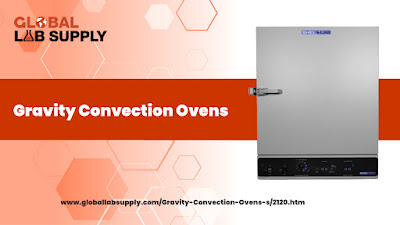Understanding Horizontal Flow Hoods
Horizontal Flow Hoods, also known as horizontal laminar flow hoods, are sophisticated and precision-engineered devices designed to provide an ultra-clean, particulate-free workspace. They create a controlled environment by directing a continuous stream of HEPA-filtered air horizontally across the work surface. This unidirectional airflow serves as a barrier, preventing airborne contaminants from coming into contact with sensitive materials, equipment, or experiments within the hood.
Applications across Scientific Disciplines
Horizontal Flow Hoods find applications in a multitude of scientific disciplines, where maintaining a sterile and contaminant-free environment is essential. Their versatility and efficacy make them indispensable tools in various fields:
Microbiology and Cell Culture: Horizontal Flow Hoods are instrumental in microbiology laboratories, safeguarding cell cultures, bacterial manipulations, and aseptic techniques. The laminar airflow ensures that organisms or particles do not compromise the integrity of cultures.
Sample Preparation and Weighing: Laboratories performing analytical chemistry, pharmaceutical research, and materials science rely on clean environments for precise sample preparation and weighing. Horizontal Flow Hoods prevent cross-contamination, enabling accurate measurements and reliable results.
Electronics Assembly and Testing: In electronics and semiconductor industries, even minor particle contamination can lead to defects and failures. Horizontal Flow Hoods provide a controlled space for assembling, testing, and handling electronic components without risking contamination.
Sterile Compounding in Pharmacy: Pharmacies and compounding facilities utilize Horizontal Flow Hoods to prepare sterile medications, ensuring patient safety by preventing any particulate matter or microbes from entering the formulations.
Forensics and Trace Analysis: Laboratories engaged in forensic investigations or trace analysis benefit from the controlled environment of Horizontal Flow Hoods, ensuring the accuracy and reliability of evidence handling.
Cleanroom Environments: In cleanroom settings, Horizontal Flow Hoods complement larger cleanroom facilities by providing localized, ultra-clean workspaces for critical tasks, reducing the risk of contamination during processes.
Unique Features of Horizontal Flow Hoods
Horizontal Flow Hoods offer a range of unique features and advantages that make them essential assets in modern laboratories:
Unidirectional Laminar Airflow: The horizontal airflow pattern ensures that particles and contaminants are pushed away from the work surface, preventing their intrusion and maintaining a sterile environment.
HEPA Filtration: High Efficiency Particulate Air (HEPA) filters play a crucial role in removing particles as small as 0.3 micrometers, ensuring that the air supplied to the workspace is virtually free of contaminants.
Ergonomic Design: Horizontal Flow Hoods are designed for user comfort and convenience, with adjustable work surfaces, ergonomic access, and intuitive controls to enhance productivity during tasks.
Safety Features: Many Horizontal Flow Hoods are equipped with alarms, airflow monitors, and filter replacement indicators to ensure that the system is functioning optimally and alert users to potential issues.
Minimal Air Turbulence: The controlled airflow minimizes turbulence, reducing the chances of cross-contamination and providing a stable environment for delicate experiments.
Versatility: These hoods can accommodate various sizes of equipment and materials, making them adaptable to diverse experimental needs and processes.
Global Lab Supply: Elevating Laboratory Standards
When it comes to acquiring high-quality Horizontal Flow Hoods and other laboratory equipment, Global Lab Supply emerges as a leading provider known for its commitment to excellence. With a focus on delivering top-notch products that adhere to the highest industry standards, Global Lab Supply's Horizontal Flow Hoods are designed to meet the specific demands of modern laboratories.
Global Lab Supply's Horizontal Flow Hoods boast advanced features, including HEPA filtration, ergonomic design, and comprehensive safety mechanisms, ensuring optimal performance and user satisfaction. By partnering with Global Lab Supply, laboratories can elevate their cleanliness standards, mitigate contamination risks, and enhance the reliability of their experiments.
Selecting the Right Horizontal Flow Hood
Choosing the right Horizontal Flow Hood requires careful consideration of various factors to ensure that it aligns with the specific needs of the laboratory:
Airflow Configuration: Horizontal Flow Hoods are available in both standard and reverse flow configurations. Assess the type of work and materials to determine the appropriate airflow direction.
Size and Dimensions: Consider the dimensions of the workspace needed for your experiments, as well as the size of equipment that will be placed within the hood.
Filtration Efficiency: Verify the type of filtration system used, ensuring it meets the required standards for removing particulates and contaminants.
Safety Features: Evaluate the available safety features, such as alarms, airflow monitoring, and filter replacement indicators, to enhance user safety and equipment longevity.
Ease of Use: Opt for a Horizontal Flow Hood with user-friendly controls and ergonomic features that facilitate efficient workflow and experimentation.
Maintenance and Service: Inquire about maintenance requirements, availability of replacement parts, and after-sales support to ensure the longevity and reliability of the equipment.
Conclusion
Horizontal Flow Hoods represent a pinnacle of clean air technology in laboratory environments, safeguarding critical experiments, samples, and processes from contamination. Their unidirectional laminar airflow, HEPA filtration, and ergonomic design make them indispensable tools in various scientific fields, where sterility and precision are paramount. By establishing partnerships with trusted suppliers like Global Lab Supply, laboratories can elevate their standards, promote reproducibility, and drive meaningful scientific advancements. The role of Horizontal Flow Hoods in ensuring the integrity of laboratory work cannot be overstated – they are a testament to human ingenuity and dedication to excellence in the pursuit of knowledge and innovation.






